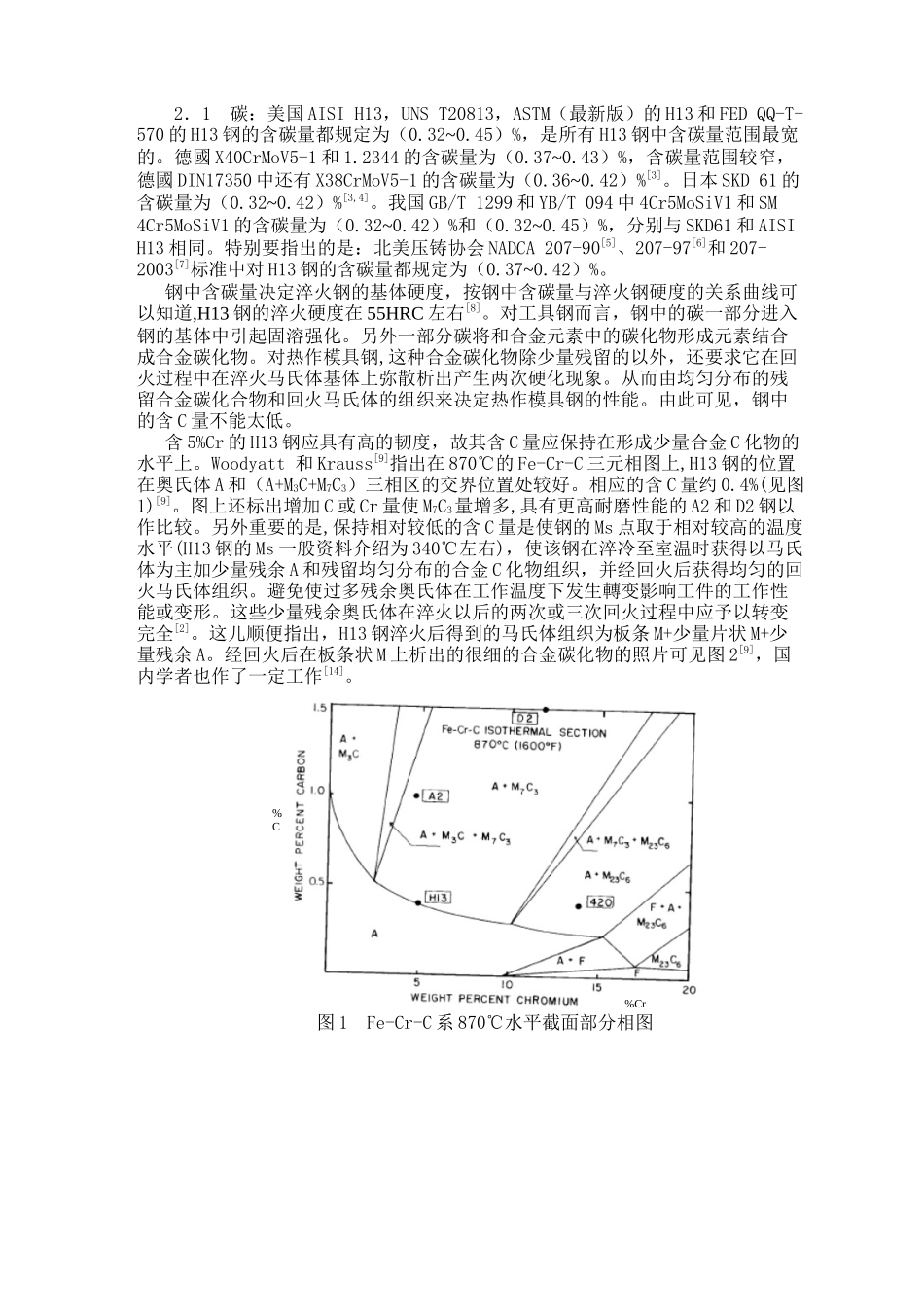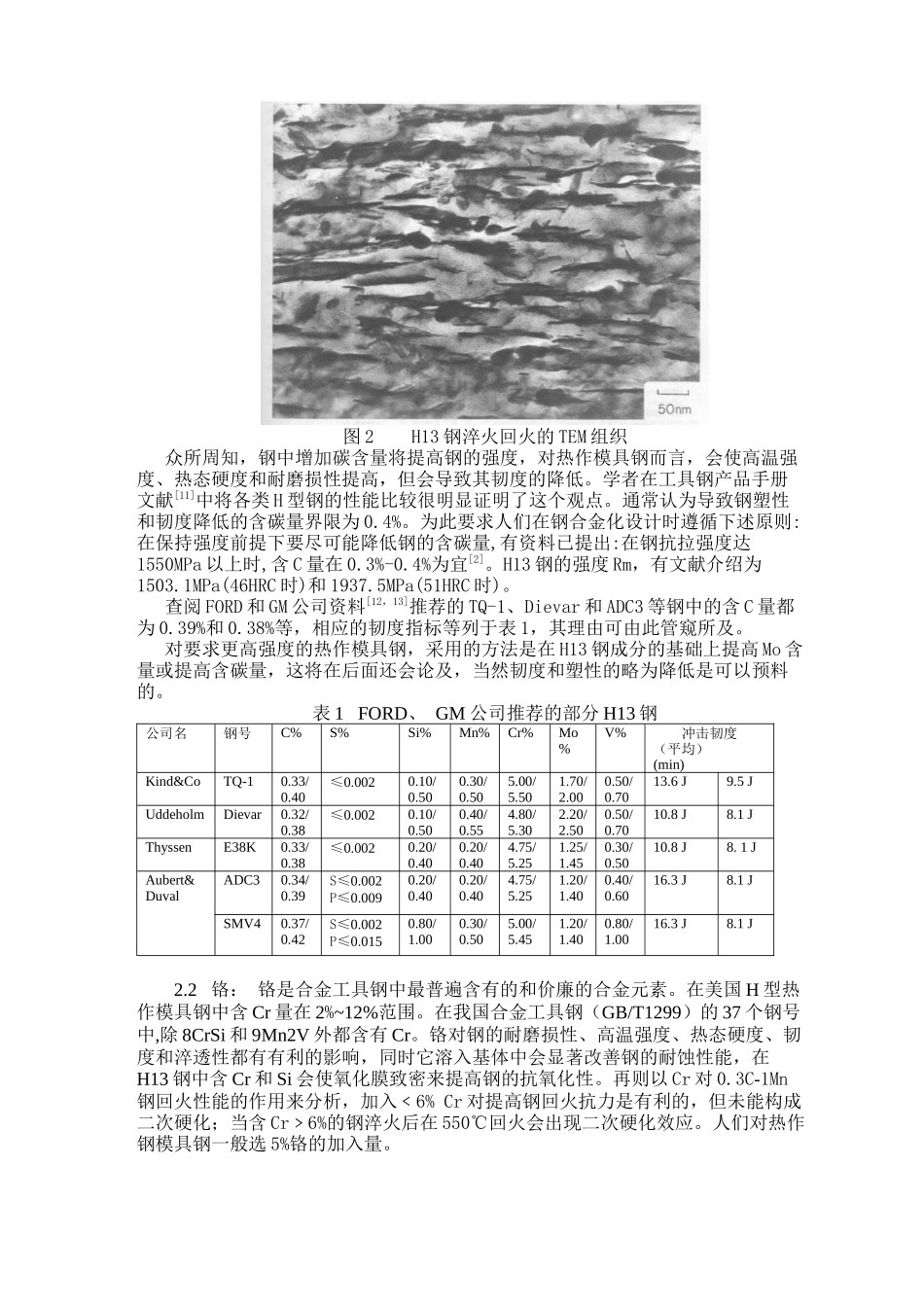H13 热作模具钢的化学成分及其改进和发展的研究 潘晓华 朱祖昌 (艾福表面处理技术(上海)有限公司,上海工程技术大学)摘要:应用钢的强韧化设计和金属学原理的相关理论,本文相当详尽地分析了 H13 钢的化学成分及其对钢的组织结构和性能的影响,同时阐明了近年来国内外对 H13 钢成分的改进和发展方面的工作,旨在促进人们能更进一步开展开发、制造和处理 H13 钢的研究。关键词:H13 钢,化学成分,显微组织,工具钢设计On the Chemical Composition of H13 Hot Work Tool Steel and It’s Development PAN Xiaohua, ZHU ZuchangAbstract:In this paper the authors apply relative theories of alloy steel design for strengthening and toughening and principles of physical metallurgy to the analyses in some detail of the chemical compositions of H13 hot work tool steel and the effects of the ones upon the microstructures and properties. In the next place we explain the improvement and development on the chemical composition in recent years. The purpose is in order to better prompt an investigation into the development, manufacture as well as heat treatment of H13 steel.Keyword: h13 steel, chemical composition, microstructure, tool steel design1. 前言热作模具钢要求材料具有高的淬透性、高的高温强度、高的耐磨性、高的韧度、高的抗热裂能力和高的耐熔损性能等。在美国,热作模具钢分为三种:铬热作模具钢、钨热作模具钢和钼热作模具钢,都冠以 H 字母,分别表示为H10~H19、H21~H26 和 H42、H43 等。其中前两种钢的含碳量在(0.30~0.50)﹪范围,后种钢的含碳量在(0.50~0.70)﹪范围内,三种钢的 Cr、W、Mo 和 V 合金元素的总含量在(6~25)﹪范围。H13 钢是使用最广泛和最具代表性的热作模具钢种,它的主要特性是[1]:(1)具有高的淬透性和高的韧性;(2)优良的抗热裂能力,在工作场合可予以水冷;(3)具有中等耐磨损能力,还可以采用渗碳或渗氮工艺来提高其表面硬度,但要略为降低抗热裂能力;(4)因其含碳量较低,回火中二次硬化能力较差;(5)在较高温度下具有抗软化能力,但使用温度高于 540℃(1000℉)硬度出现迅速下降(即能耐的工作温度为 540℃);(6...


